The Piebald Dachshund is a unique and adorable breed – like a patchwork quilt of perfection! With their striking black-and-white coats, these little dogs are sure to make any heart melt.
For those looking for an outgoing pup with plenty of personality, the Piebald Dachshund could be just the companion you need.
In this article, we’ll explore what makes these pups so special and why they’re such great companions.
What Is A Piebald Dachshund?
A Piebald is a distinctive and adorable coat pattern, characterized by a white or cream-coloured background with large patches of black, brown, red, or tan.
It can be found in a variety of hound breeds, such as Beagles, Greyhounds, and Basset Hounds.
It is a recessive gene, which means both parents must carry the gene in order for the puppy to have the Piebald pattern.
It is different from other patterns, such as solid colour or dapple coats, as only the Piebald pattern will have a white or cream background.
Though it looks cute, there are health risks associated with the Piebald gene, so it’s important to research the breed before getting one.
Characteristics
Piebald dachshunds are a breed of dog that has become increasingly popular in recent years. They’re characterized by their one- or two-colour base coat with large, white patches.
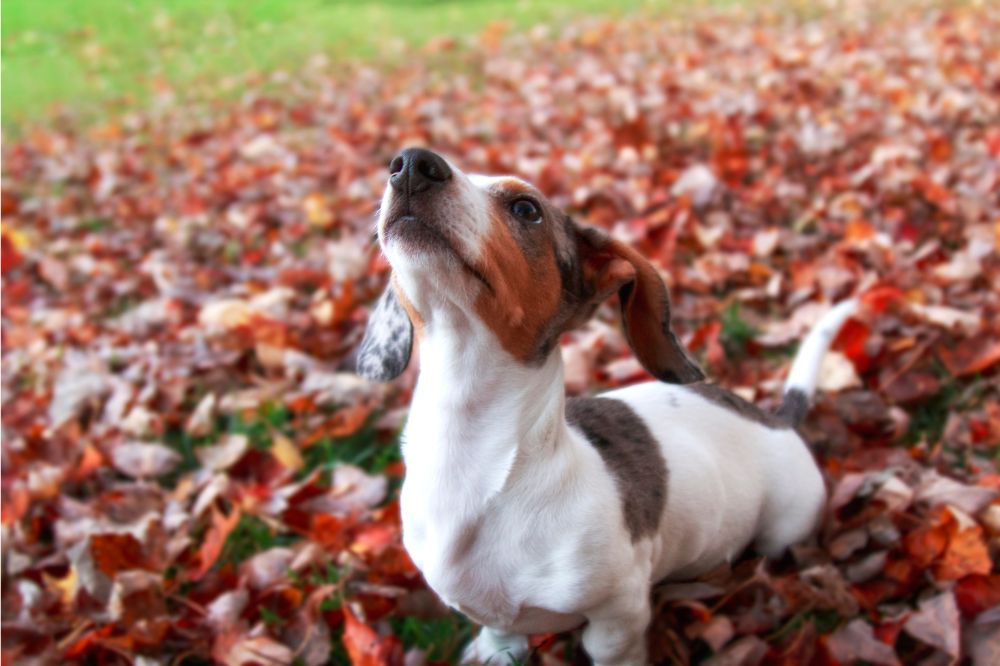
Cream piebald dachshunds feature black, tan or chocolate marking on an ivory to light beige background, while brindle piebald dachshunds have the same pattern but with darker stripes running through it.
Piebald Dachshunds can come in either short hair or long haired varieties and often have floppy ears and big brown eyes!
Their coloring makes them stand out from other breeds and they look especially striking when set against a contrasting backdrop – making them perfect for photo ops!
With proper care, these lovable pups can live up to 12+ years, giving you plenty of time to enjoy their playful personalities as well as their eye-catching coat patterns.
Health Risks
Although Piebald Dachshunds are extremely cute and often a popular breed choice, they may have some increased health risks compared to their other dachshund counterparts. Some of these include eye issues such as cataracts or glaucoma, skin allergies and sensitivity to extreme temperatures.
Due to the large white patches on the coat, Piebald Dachshund puppies can be more susceptible to sunburn if not taken care of properly by their owners or dachshund breeders. Taking extra precautions with sunscreen when outdoors is recommended for this pup in order to protect its sensitive fur and delicate skin.
It’s important for potential owners to do research about any possible health concerns before adopting one of these pups – it’ll help them provide the best life possible for their newest family member!
Gene Inheritance
Piebald Dachshunds are born with a unique genetic makeup that gives them their distinct coat patterns. It’s important to understand the gene inheritance in order to predict whether a puppy will be piebald or not – both parents need to carry the recessive piebald gene for the pup to have this type of pattern.
If either parent carries a dapple gene, then it’s likely the resulting pup won’t have any white patches on its fur. A Piebald Dapple Dachshund is possible if both parents carry two different types of genes as well.
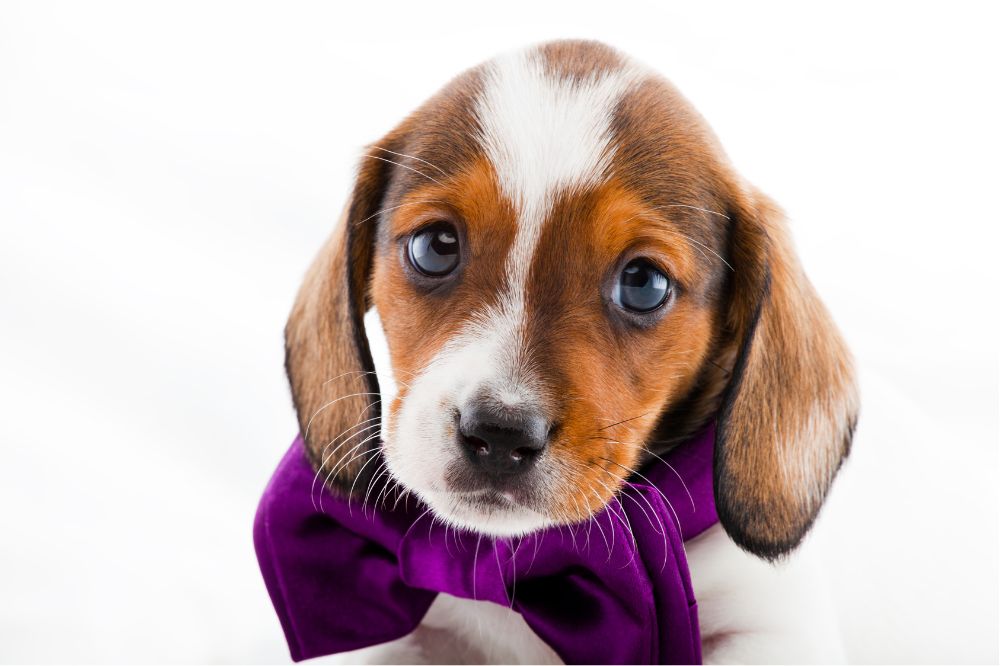
If you’re looking for a Piebald Miniature Dachshund, it’s recommended to ask your breeder about any potential health risks associated with this breed due to its inherited characteristics. Many people find these puppies extremely cute and adopt one without knowing all the facts first! Knowing what kind of genetic traits they possess can make sure owners get just the right pup they’re looking for – plus help ensure they know how best to take care of him or her too.
It’s also crucial that breeders screen their puppies properly before selling them off so buyers don’t encounter any surprises later down the line when it comes to health issues. With some extra research and careful selection process though, finding your perfect Piebald Dachshund puppy shouldn’t be difficult at all!
Are Piebald Dachshunds Rare?
The Piebald dachshunds used to be quite rare. Nowadays, lots of breeders in the US are able to breed these puppies – but it’s important for them to follow specific guidelines set by the American Kennel Club.
In contrast, you won’t find many piebald Dachshunds in the UK as they’re not accepted under the Breed Standard due to concerns about their health.
So if you’re thinking of buying a piebald dachshund, here are some things you should consider:
- Make sure you use an assured breeder who follows all relevant regulations – this will help ensure your puppy’s health is being looked after properly
- Don’t buy from unscrupulous breeders trying to pass off these puppies as ‘rare’ or ‘unique’ – chances are you’ll pay through the roof without any guarantee of quality
- Trends in coat colors and patterns come and go – so bear in mind that while there may be longer waiting lists at present due to their popularity, this could change over time
- Beware of those charging inflated prices on the basis of rarity; this is usually done by puppy farmers looking to make extra money with no consideration for welfare standards
Ultimately, it is important that before committing to purchase a dapple piebald dachshund puppy, potential owners research reputable sources thoroughly. This includes researching both local laws governing commercial breeding practices and learning more about responsible dog ownership.
Genetics Of Piebald Dachshunds
The Piebald Dachshund is a unique breed and the genetics behind this lovely coat pattern are fascinating. The piebald gene, also known as the white spotting gene, produces patches of lighter fur on top of a darker base color.
This means that miniature piebald dachshunds can come in all sorts of colors like red piebald dachshunds or black and tan dachshunds.
This gene interacts with other genes to create different patterns such as ticking which creates little holes in the white patching so their base color shows through again.
All Piebald Doxies have standard sizes regardless of their coat pattern – Standard ones grow from 8-9 inches tall and weigh up to 32 pounds while Miniature ones reach no more than 6 inches tall and 11 pounds maximum.
Piebald Dachshunds are truly amazing creatures and it’s no surprise why they’re becoming increasingly popular among pet owners.
With their charming appearance, interesting genetic makeup and friendly personality, these dogs make wonderful companions for anybody looking for an active yet loving pup!
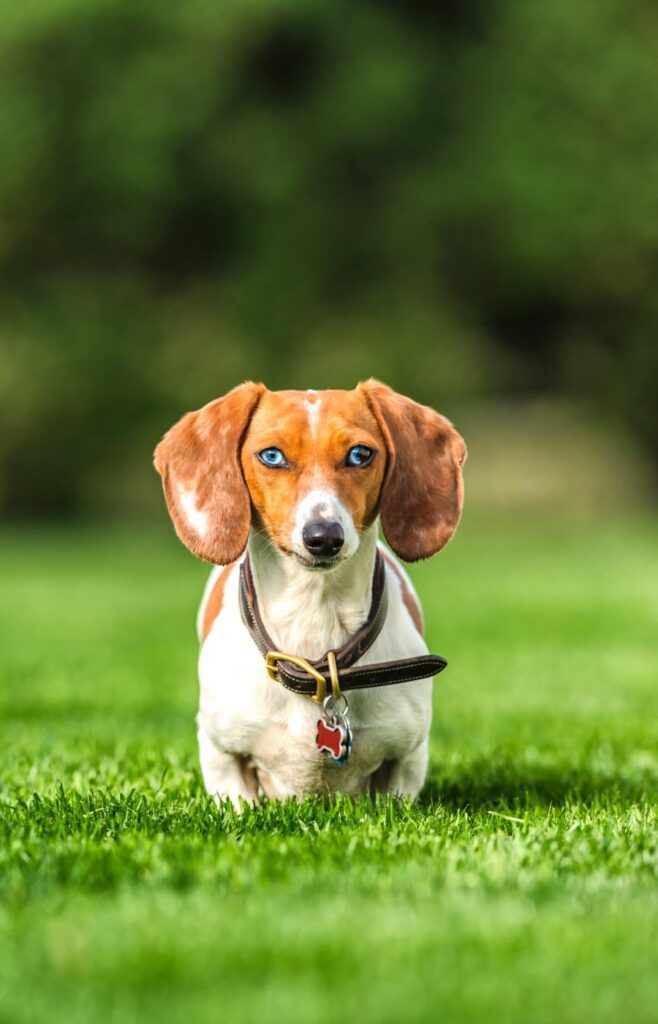
Colors And Patterns Of Piebald Dachshunds
The most common colors seen in piebald dachshunds are black and white, but they can also come in a variety of other shades.
Some unique variations include red and white, chocolate and tan, and even blue and cream. These coat patterns can create a truly stunning effect, and make for some very eye-catching pups.
No matter the color and pattern, piebald dachshunds are always sure to be adorably unique.
Common Colors
If you’re looking for an adorable pup to call your own, a piebald dachshund might be just the dog for you! These sausage-shaped cuties are known for their unique coats of black and white or cream and white fur. Whether it’s a long haired piebald dachshund from a breeder or one from a rescue, these pups will certainly bring joy into your life.
The most common colors for this breed include red, cream, black and tan, chocolate and tan, blue, Isabella, and various combinations of the above. Depending on the individual Dachshund’s genetics, some may have flecks of color in their fur that break up the solid patches of white.
The majority of Piebald Dachshunds should have at least 80% of their coat covered with white fur while not exceeding 50% coverage on the head. An all-white body is never acceptable as it can lead to health problems down the line.
Piebald Dachshunds have become increasingly popular over time due to their distinct looks. If you’re looking to adopt one of these delightful pups then make sure that you do thorough research first – they need lots of love and attention like any other pet but also require special care because of their delicate genetic makeup.
Unique Variations
With the wide array of colors and patterns available in Piebald Dachshunds, there are some truly unique variations that can be found.
There’s the extreme piebald which is entirely white with some color only on its head and tail; however, this type of breeding isn’t approved by Kennel Clubs as it can lead to serious health complications for the pup.
Additionally, you may also find Dachshunds with a combination of different patterns – like dapple brindle piebald or even a dapple piebald – each one offering an intricate look.
While these blended patterns are beautiful, it’s important to make sure that the breeder knows what they’re doing when creating such combinations since genes don’t always mix well together.
No matter which variation you choose, your Piebald Dachshund should have at least 80% coverage of white fur while not exceeding 50% coverage on the head area.
On top of that, all Piebald Dachshunds need extra tender love and care due to their delicate genetic makeup so make sure you do thorough research beforehand if you plan on adopting one!
Can You Breed Two Piebald Dachshunds?
Yes, you can breed two piebald Dachshunds. However, it’s important to be aware that the parents should not carry the dapple gene. If they do, there is a risk of producing double dapple puppies which could lead to serious health issues like congenital eye and ear defects.
Therefore, if you’re looking for a piebald dachshund, you may want to consider adopting one from a shelter or rescue centre rather than breeding them yourself. This way, you can ensure the pup has been checked by vets and has had all necessary shots and treatments in order to give them a happy and healthy start in life with their new family.
Pros And Cons Of Owning A Piebald Dachshund
Owning a Piebald Dachshund is like hitting the jackpot. These little pups are bundles of joy, full of life and love that can brighten any home. From their unique coat pattern to their loyal personality, they make wonderful companions.
However, there are some pros and cons to consider before taking one into your family.
The first pro is that they are playful and affectionate which makes them great around children. They also do well in small living spaces as long as they get enough stimulation so they don’t become bored or destructive. Plus, their average lifespan is 12-16 years.
On the other hand, these dogs can be barky due to their nature as hunters and watchdogs plus some may display aggressive or territorial behavior if not properly trained at an early age.
In summary, owning a Piebald Dachshund could bring much happiness to you and your family for many years but it should not be taken lightly since these dogs have specific needs that need to be met with proper training from day one.
Piebald Dachshunds Health Issues And Concerns
First, let’s talk about Congenital Deafness which can be an issue for Piebald Dachshunds. It’s a condition that’s present from birth and can impact a pup’s hearing.
Next, let’s discuss Intervertebral Disc Disease which can cause pain and mobility issues. It’s a common issue for dachshunds in general and especially for Piebalds.
Lastly, Progressive Retinal Atrophy is an eye condition that can lead to blindness. It’s not as common as the other two issues, but can still be an issue for Piebald Dachshunds.
So, these three health issues are something to be aware of if you own or are considering owning a Piebald Dachshund.
Congenital Deafness
It’s heartbreaking to think that one of the most beloved characteristics of piebald dachshunds, their stunning coats, could be connected with a serious health issue.
Congenital deafness is an especially concerning condition for these sweet-natured pups. It occurs when nerve endings in the inner ear atrophy due to unpigmented skin and can cause complete hearing loss within the first few weeks of life.
Fortunately, there are ways to prevent or reduce this risk: regular check ups at the vet, using protective sunscreen on areas of white coat exposed to sunlight, and avoiding loud noises.
With proper care and attention from pet owners, we can help ensure that our Piebald Dachshund companions live long and healthy lives.
Intervertebral Disc Disease
Intervertebral disc disease (IVDD) is another health issue that commonly affects dachshunds, including Piebald Dachshunds. IVDD occurs when the spinal discs become damaged or displaced, resulting in pain and possible paralysis. This condition can be caused by age-related wear and tear or trauma from a fall or other accident. To help reduce this risk, it’s important to keep your pup at an ideal weight so they don’t put too much strain on their spine, as well as provide them with plenty of support while jumping up onto furniture or going up stairs. Additionally, regular visits to the vet will allow any symptoms of IVDD to be caught early before they worsen.
Another eye concern for dachshunds is progressive retinal atrophy (PRA), which causes blindness over time in both eyes. PRA usually starts out slowly with night vision problems but eventually leads to complete blindness. Thankfully, there are tests available that check for signs of this condition. Early detection and treatment can slow down the progression of PRA and make sure you catch any changes in your dog’s eyesight quickly.
Finally, Lafora Disease is another serious condition faced by all dachshund breeds—including piebalds—which causes seizures due to a form of progressive myoclonus epilepsy. While there isn’t yet a cure for Lafora Disease, diagnosis and proper medical management can help improve quality of life for affected dogs.
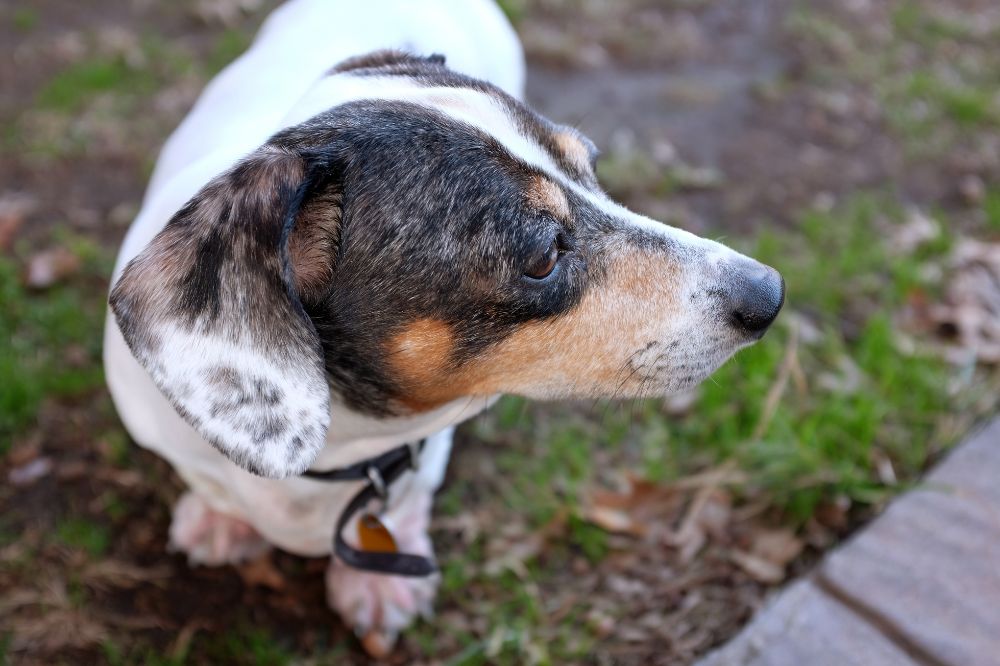
Progressive Retinal Atrophy
While congenital deafness and intervertebral disc disease (IVDD) are two conditions specific to piebald dachshunds, other eye conditions can be common to all breeds.
Progressive retinal atrophy (PRA) is one such condition that affects the eyesight of dachshunds, causing blindness over time in both eyes.
This usually starts out with night vision problems but eventually leads to complete blindness if left untreated.
Thankfully, there are tests available for early detection so you can catch any changes in your pup’s eyesight quickly and get them the treatment they need before it gets worse.
You’ll also want to make sure you’re providing plenty of support when jumping up onto furniture or going up stairs as well as keeping them at an ideal weight to help reduce their risk of IVDD.
Lastly, Lafora Disease—a form of progressive myoclonus epilepsy—is another serious health concern affecting all types of dachshunds; although there isn’t a cure yet, proper medical management will improve quality of life for affected dogs.
Feeding And Nutrition For Piebald Dachshunds
As adorable as piebald dachshunds are, their unique coat pattern isn’t the only thing that sets them apart. Their nutritional needs also differ slightly from other breeds of dogs and should be taken into consideration when it comes to feeding your pup.
To ensure your piebald dachshund is getting all the nutrition they need:
- Feed an appropriate adult dog food with ample calcium and phosphorus content such as Royal Canin Breed Health Nutrition Dachshund Adult Dry Dog Food;
- Provide puppies with more protein and fat in comparison to adults due to ongoing development, split between three meals a day;
- Monitor portion sizes according to age for both adults and puppies – typically 1 ¾ to 2 ¼ cups for adult daily allowance and ⅔ to 2 ¼ cups for puppy daily allowance.
Providing the right diet for your piebald dachshund can help keep them healthy and happy!
What Is The Difference Between A Piebald And Dapple Dachshund?
Piebald Dachshunds and dapple Dachshunds are both unique and adorable canines. The main difference between the two is in their coat patterns, which result from different genetic makeup.
Piebald markings are caused by a recessive gene, while dapple markings stem from a dominant gene. When it comes to genetics, for piebald puppies to be produced both parents must carry the piebald gene, whereas only one parent needs to have the dapple gene for any pup of theirs to be dappled. Additionally, an entire litter of puppies will all exhibit the same pattern if they’re piebald – not true with those showing the merle/dapple coloring.

In terms of appearance, there are some key differences too; single dapples don’t have large areas of white like you find on pure piebalds, although double-dapples do – making them much harder to tell apart from piebalds. Double-dapples may also display blue eyes or pink noses that aren’t found on Piebald dogs either.
Overall though, these two distinct types of Doxies make wonderful loving pets regardless of their individual features!
Piebald Dachshund Personality And Temperament
‘A dog is only as good as its owner,’ the old adage goes, and this couldn’t be more true for the piebald dachshund.
With a bold personality rooted in their hunting background, these dogs are brave and assertive. They make excellent watchdogs but also show great loyalty to their owners when given proper training.
The key to success with a piebald dachshund lies in understanding that they require strong leadership from the beginning. Although stubborn at times, these devoted pups can become obedient companions if handled in a consistent manner.
Despite their small stature, these loyal friends have an abundance of energy and enthusiasm for playtime activities – enough to keep even larger breeds on their toes!
Whether you’re looking for a guard dog or just want some canine company, there’s no denying that piebald dachshunds bring plenty of charm and character to any home. Always eager to please yet ready to take charge when needed, these little bundles of love will give your life an exciting new twist!
Frequently Asked Questions
How Much Exercise Does A Piebald Dachshund Need?
A Piebald Dachshund needs a moderate amount of exercise, usually about 30 minutes to an hour each day.
This should include both physical activity like walking or running, as well as mental stimulation such as playing fetch.
Regular walks help keep them healthy and alert while providing the opportunity for socialization with other dogs and people.
Additionally, it’s important to provide plenty of opportunities for playtime in order for your pup to stay engaged and content.
How Do I Groom A Piebald Dachshund?
Groom your piebald dachshund wisely! Whether you have a short-haired or long-haired breed, regular brushing and occasional bathing will help keep them looking their best.
Brush the coat at least once a week to reduce shedding and remove any dirt or debris that’s collected.
Bathe your pup every few months with lukewarm water and an appropriate dog shampoo – never human shampoo as it can dry out their skin.
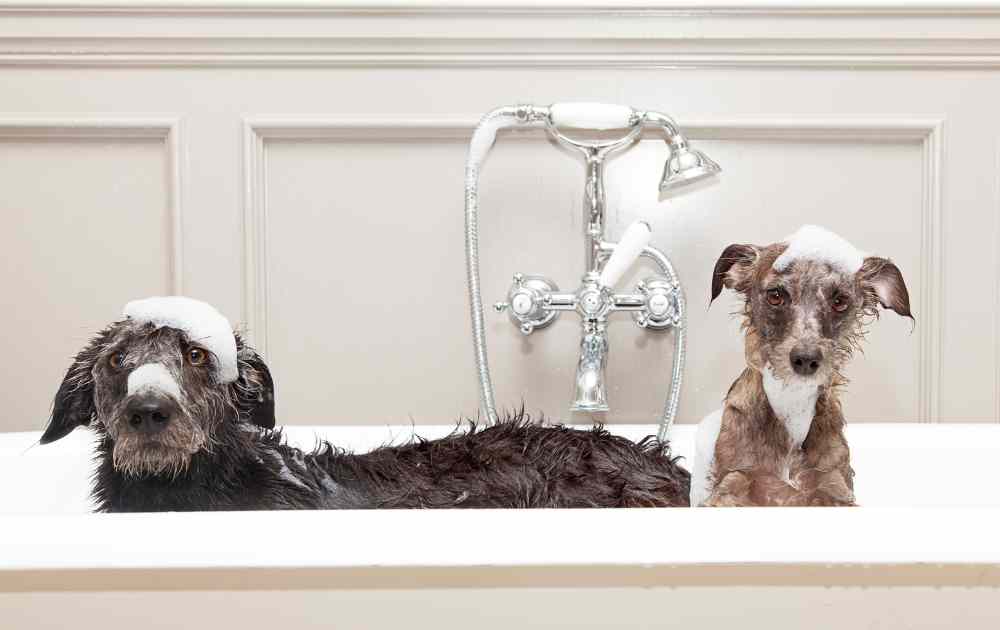
Finally, make sure they’re up to date on nail trimming and ear cleaning; this helps prevent infections and keeps them feeling comfortable.
With these simple tips, your pooch’s unique coat pattern is sure to stay gorgeous for years to come!
Are Piebald Dachshunds Good With Children?
Piebald Dachshunds make great family pets, especially when it comes to children. They have a friendly and loyal temperament and are usually affectionate towards kids. With the right socialization and training, they should get along just fine with young ones.
As with any dog breed, supervision is always advised when interacting between small children and dogs of any size or type. But overall, Piebald Dachshunds can be a wonderful addition to your family if you’re looking for an energetic and lovable pup that loves playing with kids.
What Is The Average Life Expectancy Of A Piebald Dachshund?
The average life expectancy of a dachshund is 12-16 years, depending on the size and breed.
Piebald dachshunds have the same life span as standard dachshunds; however, their unique coat pattern does not affect their longevity in any way.
As with all dogs, genetic health conditions can impact lifespan, so it’s important to ensure your Piebald pup has regular veterinary checkups to spot potential problems early.
What Is The Best Type Of Food For A Piebald Dachshund?
When it comes to selecting the best type of food for a dog, there are many factors that should be considered. A piebald dachshund is no exception.
When choosing food for this breed, look for an option that contains high-quality proteins, such as chicken and fish meal, as well as complex carbohydrates like brown rice and oatmeal.
Additionally, you’ll want something with plenty of healthy fats, vitamins, minerals and antioxidants to help keep your pup in optimal health.
Also make sure the food isn’t overly processed or filled with artificial ingredients; these things can cause digestive upset in some dogs.
Conclusion
Piebald Dachshunds are like a box of chocolates, you never know what kind of personality or coat pattern you’re going to get!
Overall, they are an incredibly unique breed that makes for the perfect companion. They require moderate exercise, regular grooming, and good-quality food in order to stay healthy and happy.
With their sweet personalities and adorable coats, these dogs make great family pets as long as proper socialization is done when they are young.
So if you’re looking for a loyal and loving pup who stands out from the crowd look no further than a Piebald Dachshund – you won’t regret it!

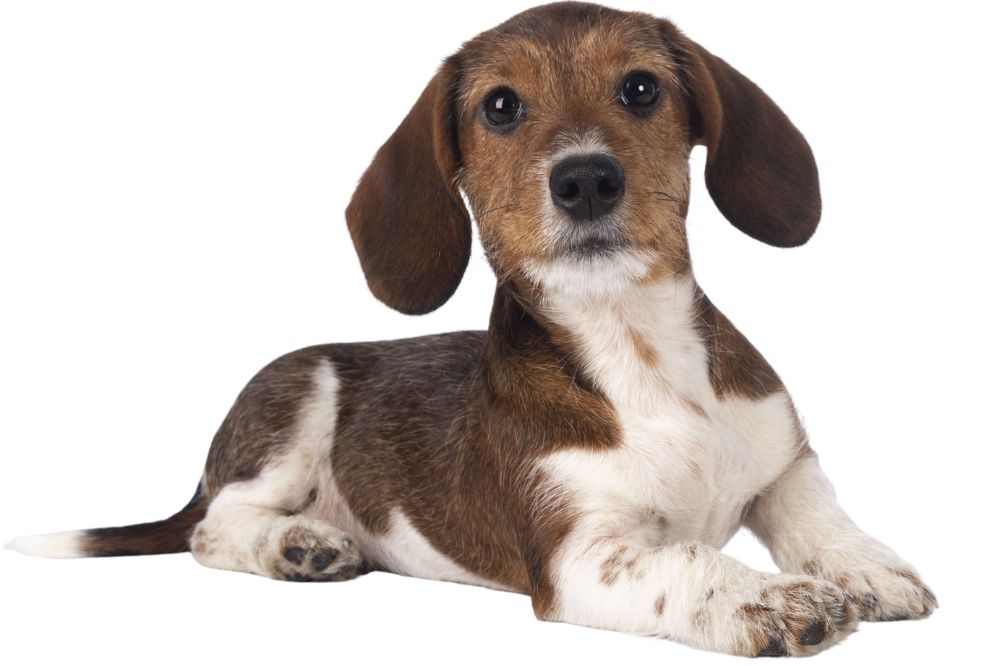
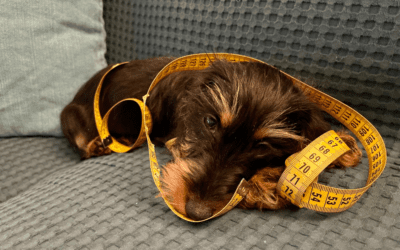


0 Comments